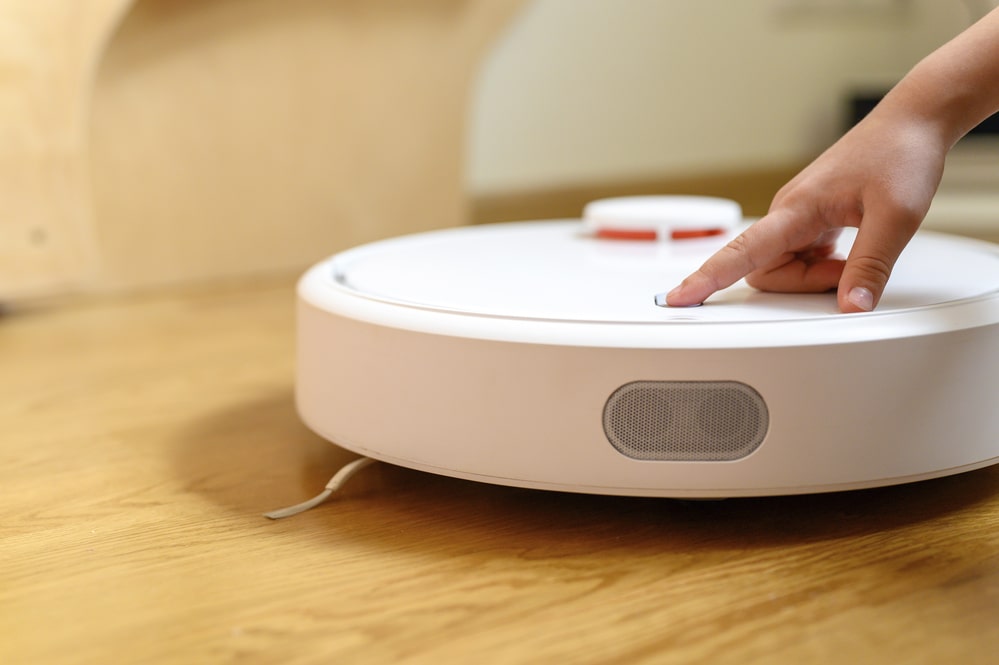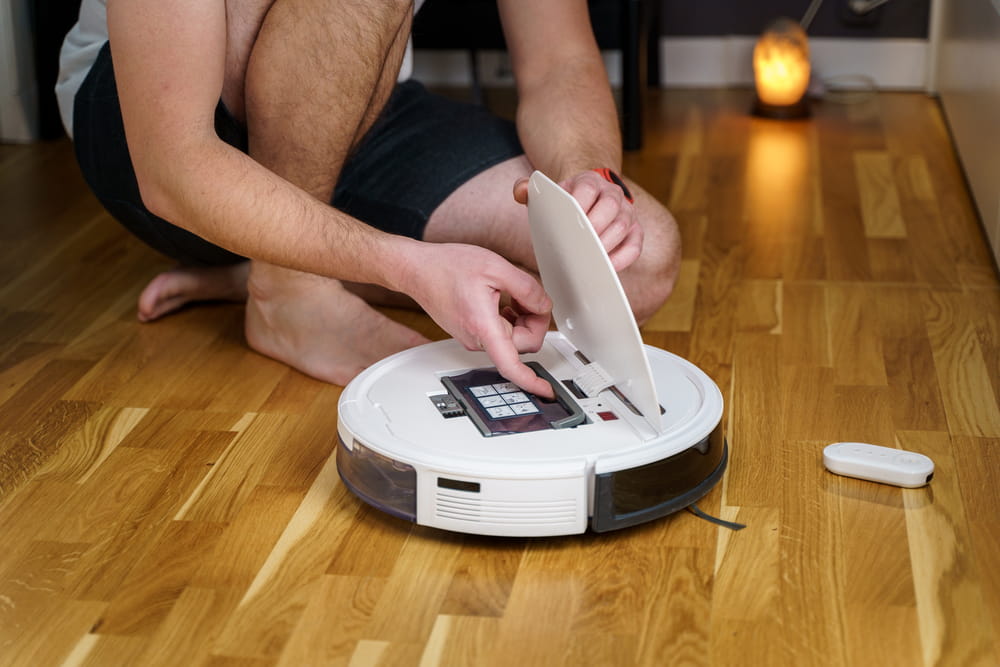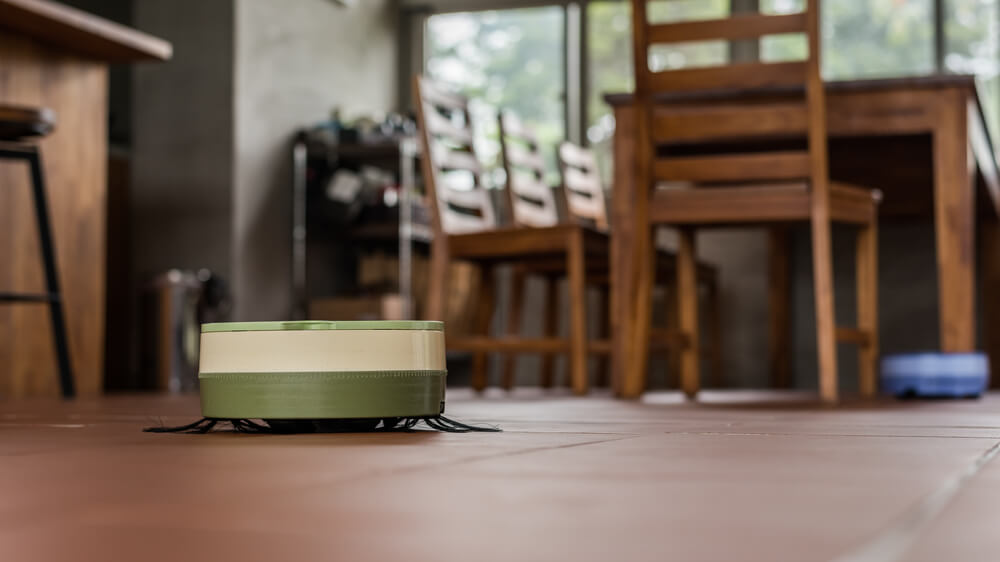If you have seen a robotic vacuum navigate your house, you might be wondering, how do robot vacuums know where to go? Learn more here!
By this point, all of us have seen robot vacuum cleaners moving around a home. They have wheels and move around the floor, sucking up debris as they go. It seems like they get more impressive every year.
So, how do robot vacuums know where to go? How do they get around obstacles and always know where debris is located? They use a combination of sensors and smarts to get the job done.
How Does A Robot Vacuum Navigate The House?
Robotic vacuum cleaners do not have a video camera to interpret the world. Instead, robot vacuums use a handful of sensors to see the world. These include:
Cliff Sensors
The first type of sensor is called a cliff sensor. Cliff sensors measure the distance between the floor and the base of the robot using IR technology.
If the distance suddenly increases, there is a cliff present. Therefore, it will back away to avoid going over the edge.
Bump Sensors
As the name suggests, bump sensors use impact triggers to sense when the robot has hit something. For example, if the Roomba hits a chair leg, it knows that it needs to back away and go around the obstacle.
Wall Sensors
In contrast to bump sensors, wall sensors are used to tell the robot when it gets close to another object, such as a wall. It can follow the shape of the wall, reaching the end before it starts to move in a different direction.
A robot vacuum cleaner uses a combination of these sensors to see where it is going. This prevents the Roomba from falling off the edge, repeatedly bumping into an object, or getting stuck somewhere. All of these sensors are required to create a fully functional robot vacuum.
How Have Robot Vacuum Cleaners Evolved?

Throughout the years, robot vacuum cleaners have evolved significantly. A few years ago, robot vacuum cleaners used color sensors to tell when it was getting close to a drop. If the robot vacuum cleaner suddenly saw a black or dark area somewhere, it interpreted this as a cliff.
It would back away and go around this area. Unfortunately, this also meant that robot vacuums had issues cleaning rugs and carpets that were black, misinterpreting them as cliffs.
Optical Sensors
In addition, robot vacuum cleaners now come with optical encoders for mapping floors, the dock location, and planning a smart, advanced path around the room.
These are sensors on the wheels that create a map to tell the robot exactly how far it has gone. It will measure the information from this light sensor to figure out how far the robot has traveled.
This tech may raise the robot vacuum’s price; however, higher-end connected models might even use a laser feature to find their way around walls, pets, and more.
Then, it will measure the layout of a room, remembering this for the future. It will also store the location of certain objects, learning where they are located to avoid them in the future.
How Can I Make It Easier For My iRobot Roomba To Navigate My House?
If you want to make it easier for your robot vacuum to clean your home, there are a few tips you need to follow. These include:
Do Not Move the Charging Station
First, do not move the charging station while the Roomba is still cleaning. It remembers where the charging station is located. If you move the charging station, the Roomba will get confused. It might have a hard time finding its home and could run out of battery looking for it.
Empty the Bin After Each Run
You should empty the bin after your Roomba is done. If the bin gets full, your Roomba might start regurgitating its dirt and debris as it cleans, making the house dirty again. You might want to get a basic robot with self-emptying capabilities.

Clean Up the Clutter
Finally, you also need to clean up any clutter that might be present. Remove toys, clothes, and objects from the floor to make it easier for your Roomba to get around. This will make it easier for your robot vacuum to clean the area without bumping into objects.
What Are the Top Robot Vacuums Available?
There are several great robot vacuums available, including:
The iRobot Roomba 614
Models like the iRobot Roomba 614 are durable, efficient, and intelligent robot vacuums. It is a nimble machine, rarely gets stuck, and can handle carpets with thick fibers, like the Roomba i7.
The Eufy Robovac 11S
One of the top budget robot vacuums, the Eufy Robovac 11S is a slim, affordable, and quiet robot vacuum. It will fit under most furniture, rarely gets stuck, but budget robotic vacuums such as this one are not as durable as some other choices.
The Roborock S4 Max
The Roborock S4 Max is a large vacuum with a high max speed. It will easily clean even the largest rooms with ease. It has a flexible system that allows you to control it via a smartphone app. You can tell which rooms to clean and which rooms to ignore.
Final Word on How Do Robot Vacuums Know Where to Go
Your robot vacuum cleaner uses a combination of sensors to figure out where to go. This includes cliff sensors, bump sensors, and wall sensors.
Your robot vacuum cleaner also uses optical encoders to learn the shape of your room, which makes it easier to clean in the future.
You can make it easier for your robot vacuum to dust and sweep if you remove clutter, keep the charging station consistent, and empty the bin every time. That way, you can get the most out of your robot vacuum.
FAQs About How Do Robot Vacuums Know Where to Go
Will my Roomba have issues with my black carpet?
Older models misinterpreted black rugs and carpets as cliffs. If you have a newer model, this shouldn’t be a problem.
Will my robot vacuum cleaner fall down the stairs?
This should not be a problem. Your robot vacuum has cliff sensors that measure the distance between the vacuum and the floor. It will avoid the stairs when it notices the drop.
